#Caenogastropoda
Text
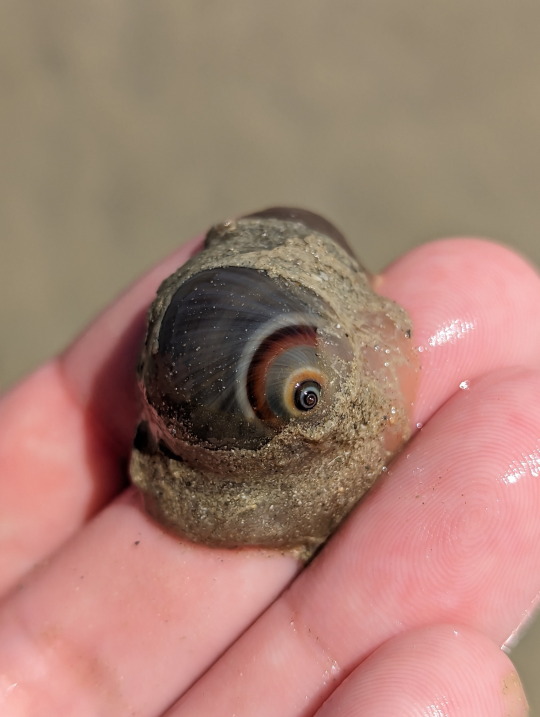
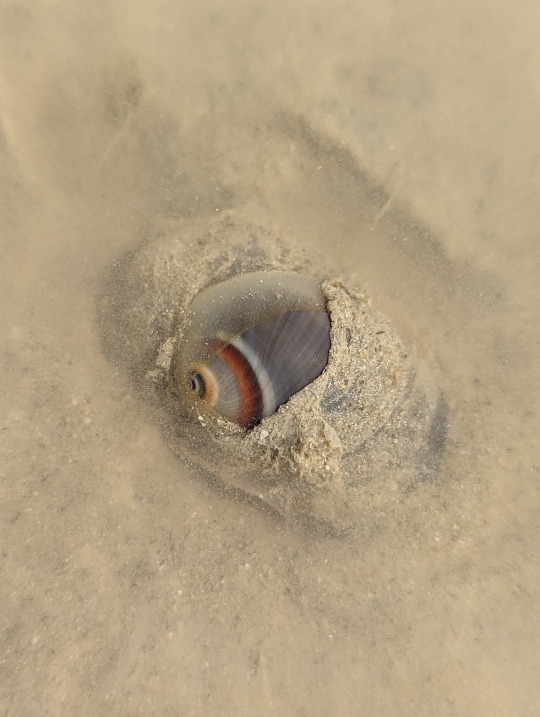
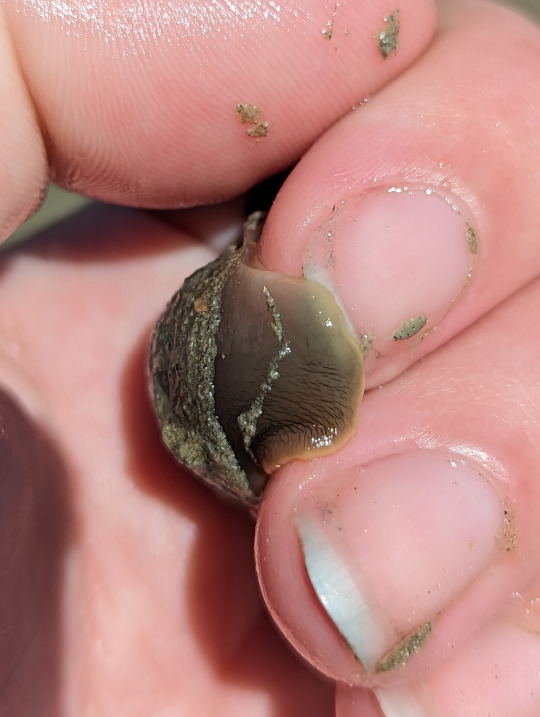

Moon Snail found foraging in the sand.
09/09/23 - Caenogastropoda: Conuber sp.
QLD:BRB - Clairview, beach
#invertblr#invertebrates#Conuber#Naticidae#Moon Snails#Caenogastropoda#Caenogastropods#Gastropoda#Gastropods#Mollusca#Molluscs#snails#snailblr
117 notes
·
View notes
Text
Five steps of Wikipedia for Saturday, 20th January 2024
Welcome, witamy, benvingut, आपका स्वागत है (āpakā svāgata hai) 🤗
Five steps of Wikipedia from "Tequestaconus" to "60th parallel south". 🪜👣

Start page 👣🏁: Tequestaconus
"Tequestaconus is an extinct genus of sea snails, marine gastropod mollusks in the family Conidae...."
Step 1️⃣ 👣: Caenogastropoda
"Caenogastropoda is a taxonomic subclass of molluscs in the class Gastropoda. It is a large diverse group which are mostly sea snails and other marine gastropod mollusks, but also includes some freshwater snails and some land snails. The subclass is the most diverse and ecologically successful of the..."
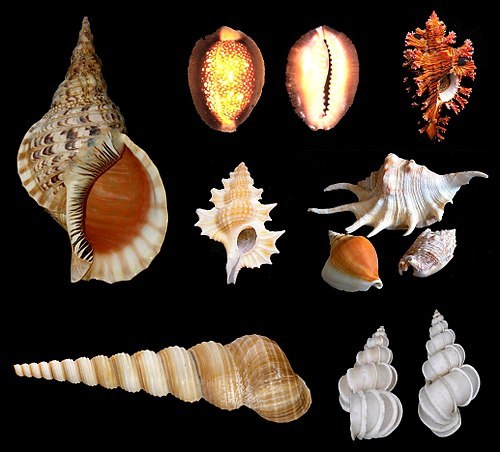
Image licensed under CC BY-SA 4.0? by User:MathKnight and the photographers of the images above
Step 2️⃣ 👣: Cambrian
"The Cambrian Period ( KAM-bree-ən, KAYM-; sometimes symbolized Ꞓ) is the first geological period of the Paleozoic Era, and of the Phanerozoic Eon. The Cambrian lasted 53.4 million years from the end of the preceding Ediacaran Period 538.8 million years ago (mya) to the beginning of the Ordovician..."

Image licensed under CC BY-SA 4.0? by Sammy2012
Step 3️⃣ 👣: Andean-Saharan glaciation
"The Andean-Saharan glaciation, also known as the Early Paleozoic Ice Age (EPIA), the Early Paleozoic Icehouse, the Late Ordovician glaciation, the end-Ordovician glaciation, or the Hirnantian glaciation, occurred during the Paleozoic from approximately 460 Ma to around 420 Ma, during the Late..."
Step 4️⃣ 👣: Antarctica
"Antarctica ( ) is Earth's southernmost and least-populated continent. Situated almost entirely south of the Antarctic Circle and surrounded by the Southern Ocean (also known as the Antarctic Ocean), it contains the geographic South Pole. Antarctica is the fifth-largest continent, being about 40%..."
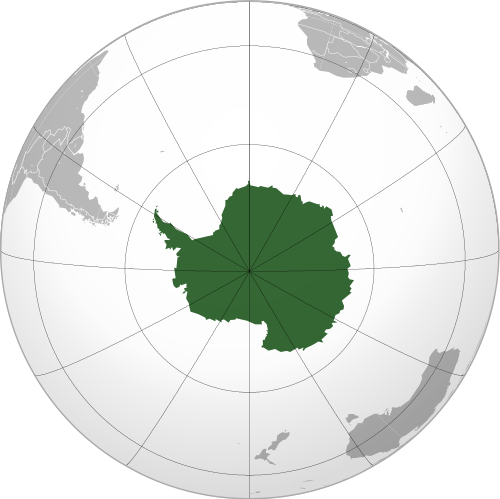
Image licensed under CC BY-SA 3.0? by Heraldry
Step 5️⃣ 👣: 60th parallel south
"The 60th parallel south is a circle of latitude that is 60 degrees south of Earth's equatorial plane. No land lies on the parallel—it crosses nothing but ocean. The closest land is a group of rocks north of Coronation Island (Melson Rocks or Governor Islands) of the South Orkney Islands, which are..."
0 notes
Text
Mitogenomic Phylogeny of Tonnoidea Suter, 1913 (1825) (Gastropoda: Caenogastropoda)
Pubmed: http://dlvr.it/SyprX6
0 notes
Text
Systematic revision of the snorkel snail genus Rhiostoma Benson, 1860 (Gastropoda, Caenogastropoda, Cyclophoridae) with descriptions of new species
http://dlvr.it/Sptbrs
0 notes
Photo

Bailer snail (Melo melo)
Photo by Loh Kok Sheng
#bailer snail#indian volute#melo melo#melo#meloini#amoriinae#volutidae#volutoidea#neogastropoda#caenogastropoda#gastropoda#mollusca#lophotrochozoa#beautiful species
2K notes
·
View notes
Photo
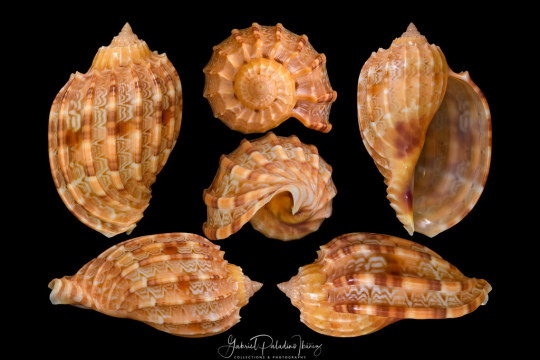
Harpa kajiyamai Habe, 1970 by Gabriel Paladino Photography https://flic.kr/p/2jYhgYt
4 notes
·
View notes
Photo

Greta Thunberg, the 17-year-old environment activist, has inspired thousands of people across the world, now, that effort has been offset, as two species have been named after her, and that list could probably increase.
From the forests of Nairobi, Kenia, and inspired by its labour, this tiny beetle has been named Nelloptodes gretae, and belongs to the Ptiliidae family, a highly diverse group of minute beetles, with over 400 species within, but is was stored unnamed in the Natural History Museum of Londo’s collection after it was collected in mid 60's , until late 2019, when is was formelly described and named by researches at NHM.
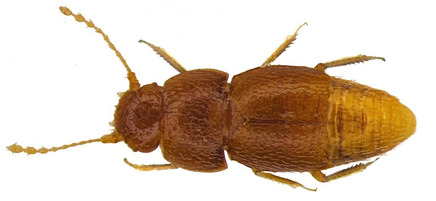
- The tiny Nelloptodes gretae, measures 0.79 millimetres long, and it has no eyes or wings.
Greta's own passion has inspired other scientists, who named a microsnail as Craspedotropis gretathunbergae, honouring her. This tiny snail inhabit Borneo tropical rainforests, and is very sensitive to the droughts and temperature extremes that are likely to be more frequent as climate change continues, comment dutchs researchers at Taxon Expeditions, who made the discovery
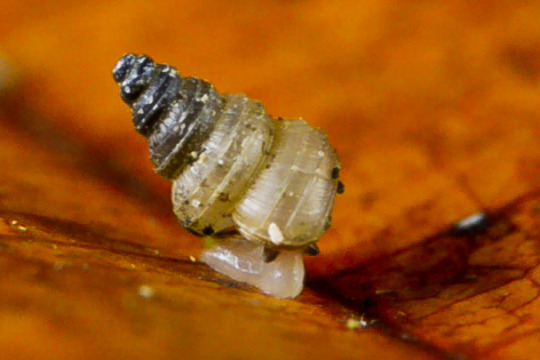
- Craspedotropis gretathunbergae has a pale, spire high conical shell, and as orther microsnails, measures about two millimeters. Photograph by Pierre Escoubas. See video of a living individual here
- reference (Open Access):
Menno Schilthuizen et al. 2020. Craspedotropis gretathunbergae, a new species of Cyclophoridae (Gastropoda: Caenogastropoda), discovered and described on a field course to Kuala Belalong rainforest, Brunei. Biodiversity Data Journal
-Michael, 2019. Studies of Ptiliidae (Coleoptera) in the spirit collection of the Natural History Museum, London, 6: New species and records collected by W.C. Block in Kenya and Uganda, 1964–1965. Entomologist's Monthly Magazine
#Nelloptodes gretae#Craspedotropis gretathunbergae#gastropoda#Caenogastropoda#ptiliidae#coleoptera#animals#new species#no marine#biology#Greta Thunberg
37 notes
·
View notes
Video
youtube
Watch These Cunning Snails Stab and Swallow Fish Whole | Deep Look
Cone snails have an arsenal of tools and weapons under their pretty shells. These reef-dwelling hunters nab their prey in microseconds, then slowly eat them alive.
#cone snail#cone snails#snail#snails#gastropod#gastropoda#gastropods#caenogastropoda#invertebrate#invertebrates#marine biology#zoology#biology#nature#science#pbs#deep look
56 notes
·
View notes
Text
Ocean, Mollusk, Nannamoria gotoi
Ocean, Mollusk, Nannamoria gotoi
🐕
1992 AD
Poppe describes the species Nannamoria gotoi, a species of sea snail, a marine gastropod mollusk in the family Volutidae.
Nannamoria gotoi
Scientific…

View On WordPress
#Amoriinae#Animalia#clade Caenogastropoda#clade Hypsogastropoda#clade Neogastropoda#Gastropoda#gotoi#Mollusca#Muricoidea#Nannamoria#Nannamoria gotoi#Volutidae
3 notes
·
View notes
Photo

Channeled Whelk, Busycotypus canaliculatus (by me)
#Channeled Whelk#Busycotypus canaliculatus#Busycotypus#Busyconidae#Buccinoidea#Neogastropoda#Caenogastropoda#Gastropoda#Mollusca#whelk#shell#beach#sand#autumn#Raritan Bay Waterfront Park#South Amboy#Middlesex County#New Jersey#mine
19 notes
·
View notes
Text
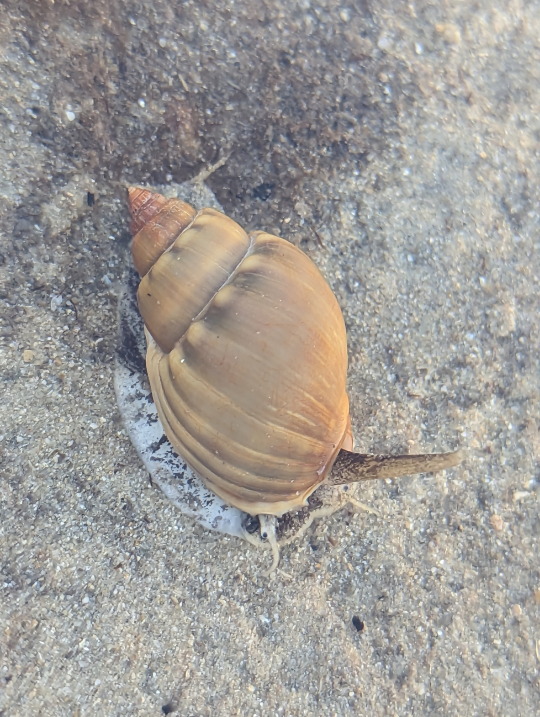
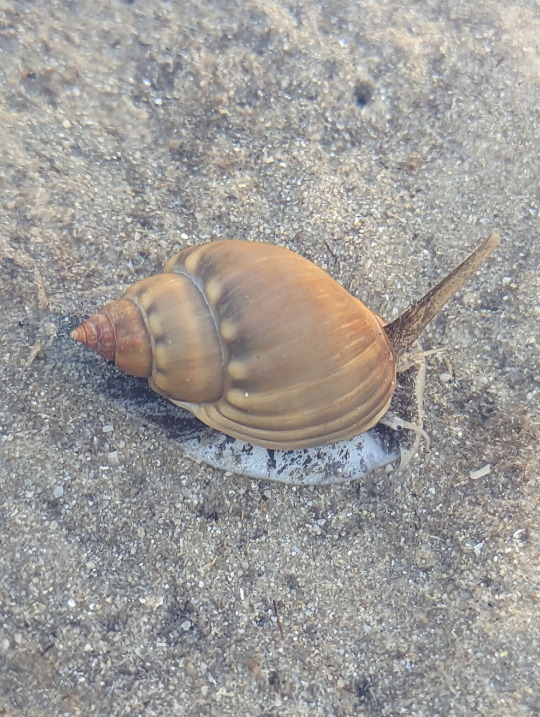
Nassarius coronatus


Nassarius dorsatus


Nassarius pullus
The different Nassa mudsnails found on Woppa.
These species can be found on the mainland also.
12/09/23 - Gastropoda: Nassariidae spp. - Woppa, Leeke's Estuary
#invertebrates#invertblr#Nassarius pullus#Ribbed Dogwhelk#Nassarius dorsatus#Nassarius coronatus#Coronated Dogwhelk#Nassariidae#Nassa Mudsnails#Caenogastropoda#Caenogastropods#Mollusca#Molluscs#Gastropoda#Gastropods#snails#snailblr
57 notes
·
View notes
Photo
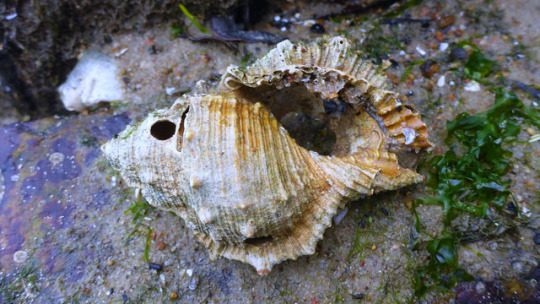
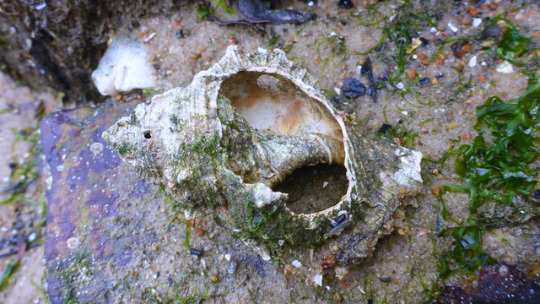
Frog Snail (Bufonaria sp.)
Chek Jawa, 28th December 2016
Wild Fact Sheets
A preliminary checklist of the molluscs of Singapore
There are 2 species of Frog Snail recorded in Singapore waters:
Common Frog Snail (Bufonaria rana)
The Biodiversity of Singapore
Shells of South East Queensland
Shell-bearing gastropod molluscs of the Singapore Strait
Hardy's Internet Guide to Marine Gastropods & Near Classes
Conchology, Inc.
Femorale
WMSDB - Worldwide Mollusc Species Data Base
The Living Marine Resources of the Western Central Pacific Volume 1
SeaLifeBase
Near-elegant Frog Snail (Bufonaria perelegans)
Hardy's Internet Guide to Marine Gastropods & Near Classes
Conchology, Inc.
Femorale
WMSDB - Worldwide Mollusc Species Data Base
SeaLifeBase
#Bursidae#common frog snail#common frog shell#Bufonaria rana#near-elegant frog snail#near-elegant frog shell#Bufonaria perelegans#frog shells#frog snails#Littorinimorpha#Hypsogastropoda#Caenogastropoda#gastropods#Gastropoda#snails#marine#Pulau Ubin#Chek Jawa#Straits of Johor#Monday Morgue
0 notes
Text
Blind shrimps, translucent snails
By Jenny Davis, Charles Darwin University; Daryl Nielsen, CSIRO; Gavin Rees, CSIRO, and Stefanie Oberprieler, Charles Darwin University
There aren’t many parts of the world where you can discover a completely new assemblage of living creatures. But after sampling underground water in a remote, arid region of northern Australia, we discovered at least 11, and probably more, new species of stygofauna.
Stygofauna are invertebrates that have evolved exclusively in underground water. A life in complete darkness means these animals are often blind, beautifully translucent and often extremely localised – rarely living anywhere else but the patch they’re found in.
The species we discovered live in a region earmarked for fracking by the Northern Territory and federal government. As with any mining activity, it’s important future gas extraction doesn’t harm groundwater habitats or the water that sustains them.
Our findings, published today, show the importance of conducting comprehensive environmental assessments before extraction projects begin. These assessments are especially critical in Australia’s north, where many plants and animals living in surface and groundwater have not yet been documented.
When the going gets tough, go underground
Stygofauna were first discovered in Western Australia in 1991. Since then, these underground, aquatic organisms have been recorded across the continent. Today, more than 400 Australian species have been formally recognised by scientists.

The subterranean fauna we collected from NT aquifers, including a range of species unknown to science. A–C: Atyid shrimps, including Parisia unguis; D-F: Amphipods in Melitidae family; G: The syncarid species Brevisomabathynella sp.; H-J: members of the Candonidae family of ostracods; K: the harpacticoid species Nitokra lacustris; L: a new species of snail in the Caenogastropoda: M-N: Members of the Cyclopidae family of copepods; O: The worm species Aeolosoma sp. GISERA, Author provided
Stygofauna are the ultimate climate change refugees. They would have inhabited surface water when inland Australia was much wetter. But as the continent started drying around 14 million years ago, they moved underground to the relatively stable environmental conditions of subterranean aquifers.
Today, stygofauna help maintain the integrity of groundwater food webs. They mostly graze on fungal and microbial films created by organic material leaching from the surface.
A thriving stygofauna ecosystem lies beneath the surface of northern Australia’s arid outback. We sampled water through bores to measure their presence. Credit: Jenny Davis, Author provided
In 2018, the final report of an independent inquiry called for a critical knowledge gap regarding groundwater to be filled, to ensure fracking could be done safely in the Northern Territory. We wanted to determine where stygofauna and microbial assemblages occurred, and in what numbers.
Our project started in 2019, when we carried out a pilot survey of groundwater wells (bores) in the Beetaloo Sub-basin and Roper River region. The Beetaloo Sub-basin is potentially one of the most important areas for shale gas in Australia.
What we found
The stygofauna we found range in size from centimetres to millimetres and include:
two new species of ostracod: small crustaceans enclosed within mussel-like shells
a new species of amphipod: this crustacean acts as a natural vacuum cleaner, feeding on decomposing material
multiple new species of copepods: tiny crustaceans which form a major component of the zooplankton in marine and freshwater systems
a new syncarid: another crustacean entirely restricted to groundwater habitats
a new snail and a new worm.
These species were living in groundwater 400 to 900 kilometres south of Darwin. We found them mostly in limestone karst habitats, which contain many channels and underground caverns.
Perhaps most exciting, we also found a relatively large, colourless, blind shrimp (Parisia unguis) previously known only from the Cutta Cutta caves near Katherine. This shrimp is an “apex” predator, feeding on other stygofauna — a rare find for these kinds of ecosystems.
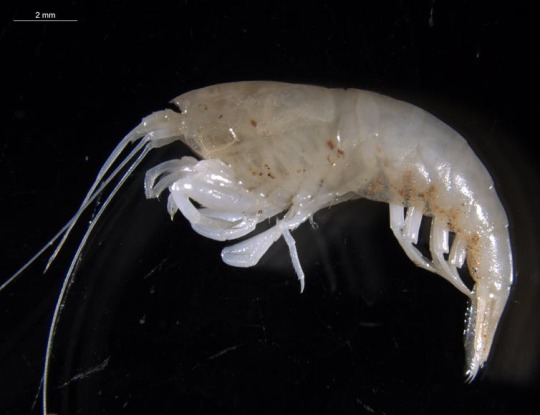
A microscopic image of Parisia unguis, a freshwater shrimp. Credit: Stefanie Oberprieler, Author provided
Protecting groundwater and the animals that live there
The Beetaloo Sub-basin in located beneath a major freshwater resource, the Cambrian Limestone Aquifer. It supplies water for domestic use, cattle stations and horticulture.
Surface water in this dry region is scarce, and it’s important natural gas development does not harm groundwater.
The Beetaloo Basin is part of the federal government’s gas expansion strategy. Credit: Department of Industry, Science, Energy and Resources
The stygofauna we found are not the first to potentially be affected by a resource project. Stygofauna have also been found at the Yeelirrie uranium mine in Western Australia, approved by the federal government in 2019. More research will be required to understand risks to the stygofauna we found at the NT site.
The discovery of these new NT species has implications for all extractive industries affecting groundwater. It shows the importance of thorough assessment and monitoring before work begins, to ensure damage to groundwater and associated ecosystems is detected and mitigated.
Where to from here
Groundwater is vital to inland Australia. Underground ecosystems must be protected – and not considered “out of sight, out of mind”.
Our study provides the direction to reduce risks to stygofauna, ensuring their ecosystems and groundwater quality is maintained.
Comprehensive environmental surveys are needed to properly document the distribution of these underground assemblages. The new stygofauna we found must also be formally recognised as a new species in science, and their DNA sequence established to support monitoring programs.
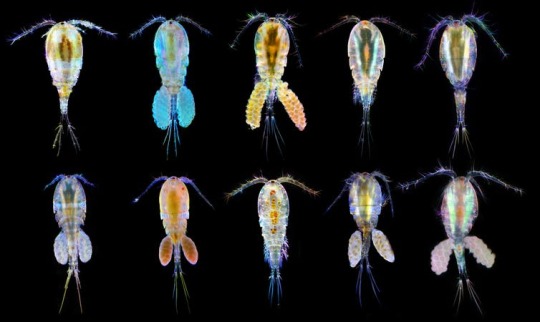
Different species of copepods from various parts of the world. Credit: Andrei Savitsky/Wikimedia, CC BY-SA
Many new tools and approaches are available to support environmental assessment, monitoring and management of resource extraction projects. These include remote sensing and molecular analyses.
Deploying the necessary tools and methods will help ensure development in northern Australia is sustainable. It will also inform efforts to protect groundwater habitats and stygofauna across the continent.
Jenny Davis, Professor, Research Institute for Environment & Livelihoods, Charles Darwin University, Charles Darwin University; Daryl Nielsen, Principal Research Scientist, CSIRO; Gavin Rees, Principal Research Scientist, CSIRO, and Stefanie Oberprieler, Research associate, Charles Darwin University
This article is republished from The Conversation under a Creative Commons license. Read the original article.
Blind shrimps, translucent snails published first on https://triviaqaweb.weebly.com/
0 notes
Photo
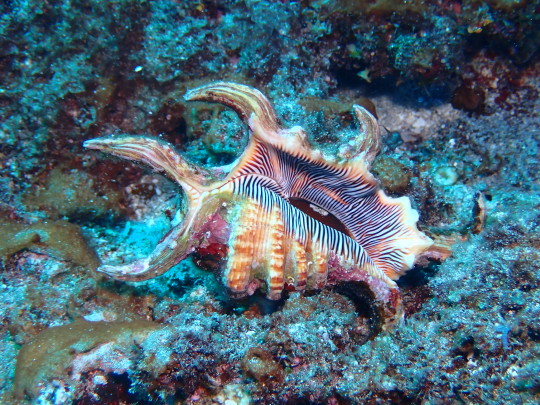
Arthritic spider conch (Harpago arthriticus)
Photo by FloT974
#arthritic spider conch#spider conch#harpago arthriticus#harpago#strombidae#stromboidea#littorinimorpha#hypsogastropoda#caenogastropoda#gastropoda#mollusca#lophotrochozoa
38 notes
·
View notes
Text
💛Golden Mystery Snail🐌

Mystery snails are in the apple snail family that contains over 100 different known species!
Here’s a cool little guy commonly called a mystery snail. They’re in kingdom Animalia, phylum Mollusca, class Gastropoda, family Ampullariidae, genus Pomacea, and their scientific name is Pomacea bridgesii.
They are known to live in the Paraguay and Amazon rivers. They’re active at night and enjoy swamps, ponds, lakes, and rivers. Mystery snails are bottom feeders and spend time usually in the open at the bottom of a body of water.

They are often kept in aquariums
Mystery snails reproduce sexually. The female will then deposit the many fertilized eggs near the surface of the water. After 2 to 4 weeks, they will hatch and eat their way out of the egg. They feed on soft algae the first few days after hatching and soon will grow to be the same size as their parents!

Eggs ^
Here’s a video of some of the babies up close.
Here’s another video showing some cute little baby mystery snails being fed in an aquarium.
They have evolved from a common ancestor of gastropods,the Caenogastropoda.

Thanks for reading!
0 notes
Link
Tracing the mysterious green flashes of light produced by a sea snail has revealed a creature built to shine from the inside – and with a shell that may be designed for communication as well as protection.
Typically found in tight clusters or groups at rocky shorelines, the clusterwink snail, or Hinea brasiliana, was known to produce light. But scientists like Dimitri Deheyn assumed the sea snails did their light thing just like their pals on the land. Terrestrial snails produce a glowing light from their foot when it's sticking outside the shell.
Nerida Wilson of the Australian Museum in Sydney was working with the Hinea snail when she noticed these bright flashes and not the usual snail glow, so she contacted her colleague Deheyn, of the University of California-San Diego’s Scripps Institution of Oceanography, and sent him some snails.
The first difference he noticed upon receiving them was that, instead of glowing continuously, they produced light flashes that occurred only when touched.
Not only that, but when the snails retreated into their shells, as snails normally do when startled, they continued to produce light – light that you could see on the outside of the shell.
The flashes are super-fast, Deheyn said, pulsating once every hundred milliseconds or less. And as long as you keep tapping the shell, the snail continues its psychedelic outpouring. "I have records of light flashes for like a half-hour, just flashes, flashes, flashes," Deheyn told LiveScience.
Continue reading
#snail#snails#gastropod#mollusc#mollusk#biology#marine biology#bioluminescence#gastropoda#caenogastropoda
27 notes
·
View notes